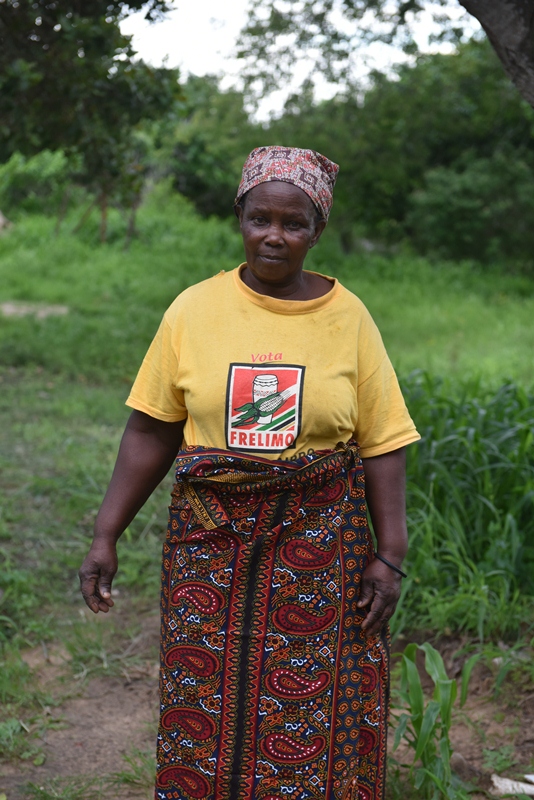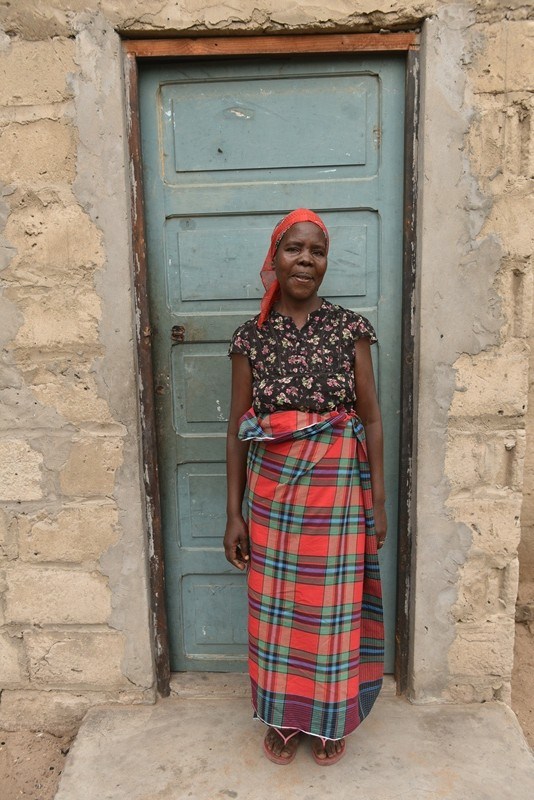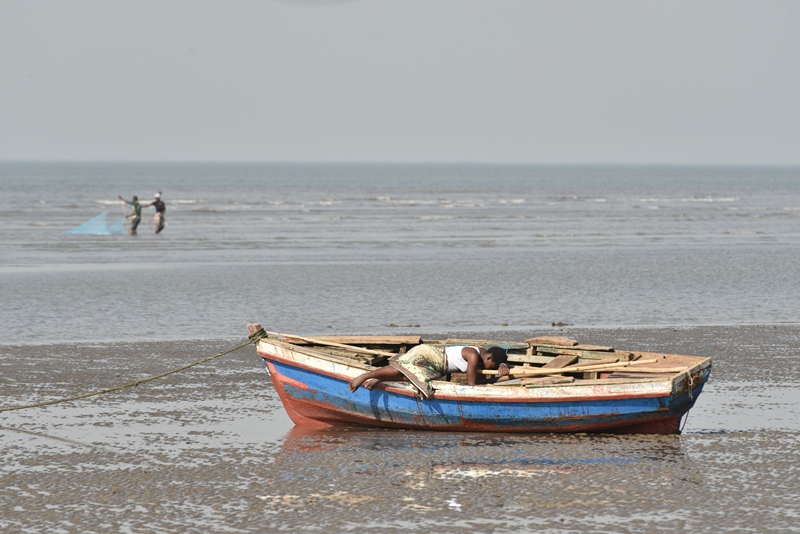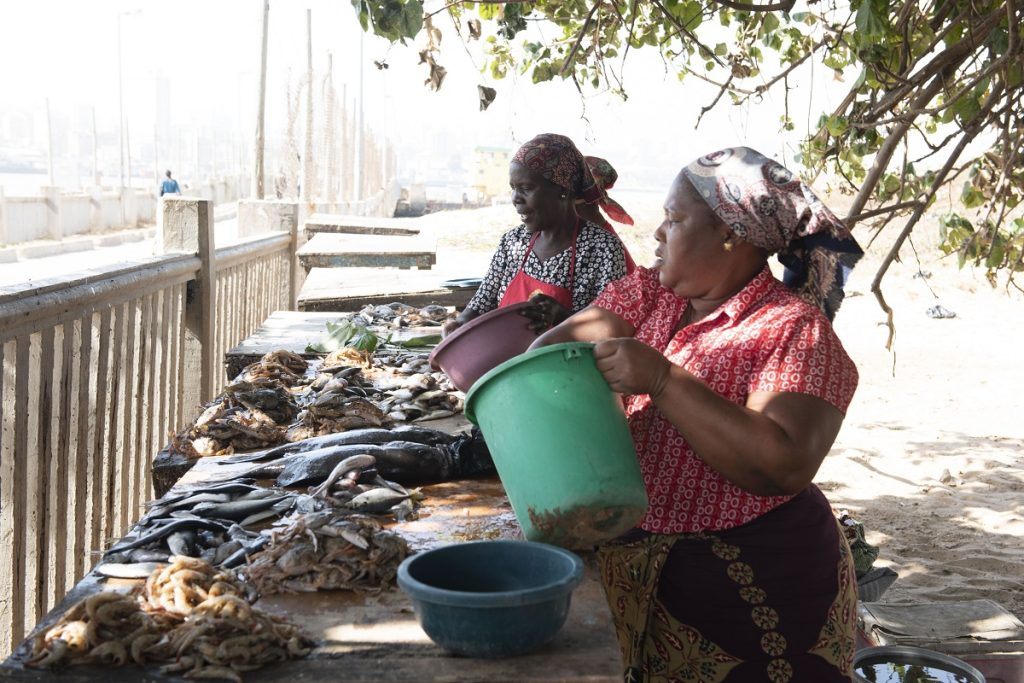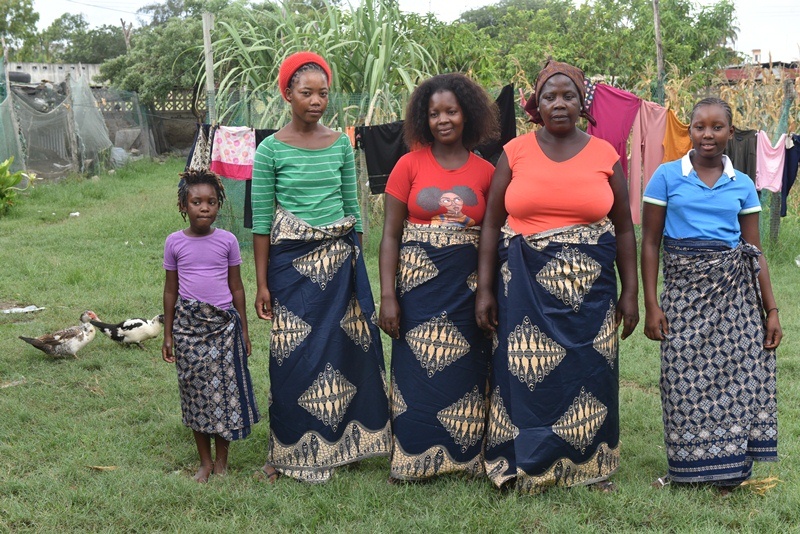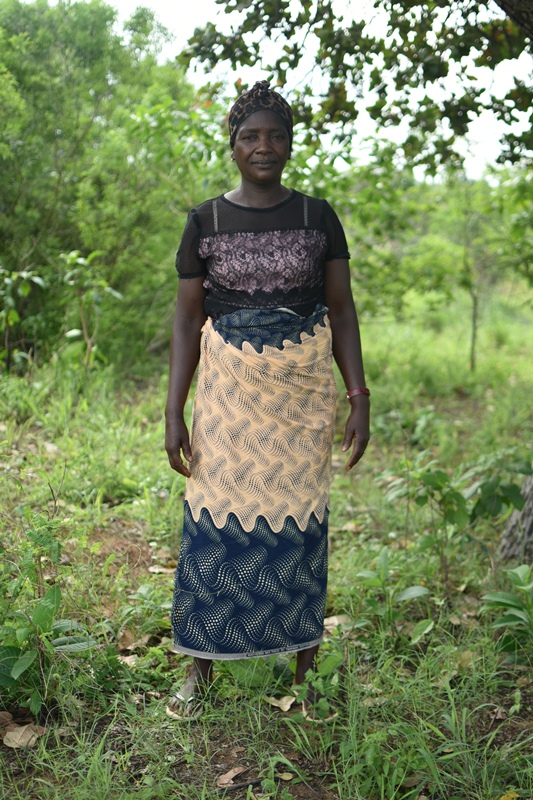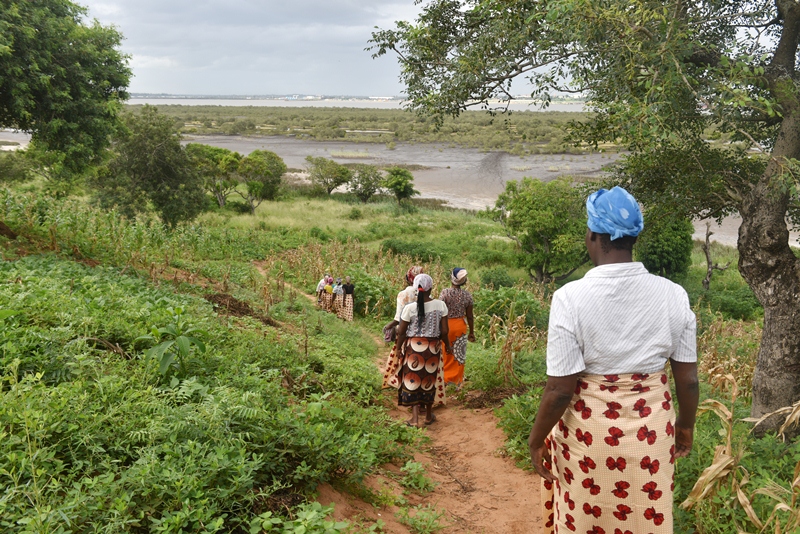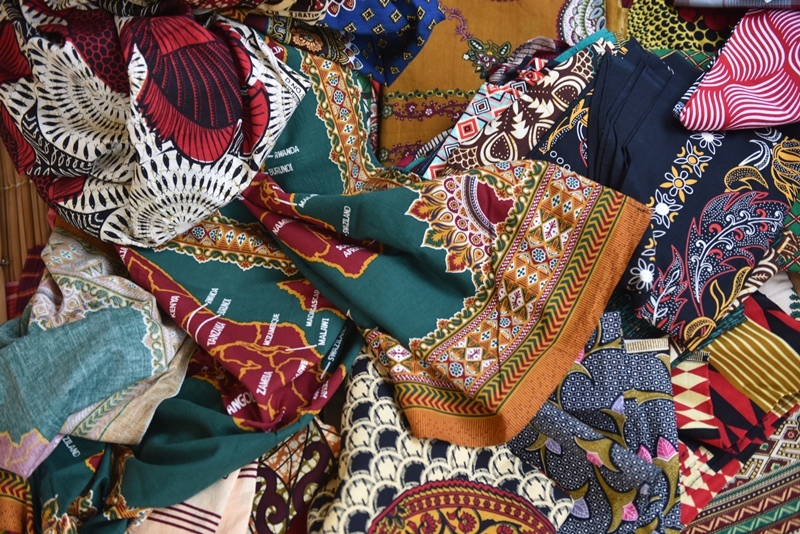The WITH Coastal Style project, supported by the Rising from the Depths Network, has been researching the role of material heritage amongst women in coastal Katembe district, across the bay from the Mozambican capital city, Maputo. In this blog, Sarah Worden reflects on the impact of the project. Scroll down for an online gallery replicating the text and images of the WITH Coastal Style exhibition at the Fortress Museum in Maputo, Mozambique from May to July 2021.
WITH Coastal Style focused on understanding and highlighting the complex relationship between tradition and change in the lives of women in Katembe through the ‘capulana’, a cloth printed in a wide variety of designs and worn by women throughout Mozambique. Discussions about capulana provided a forum for women to reflect on wider issues in their lives at a time of major infrastructural development around Maputo.
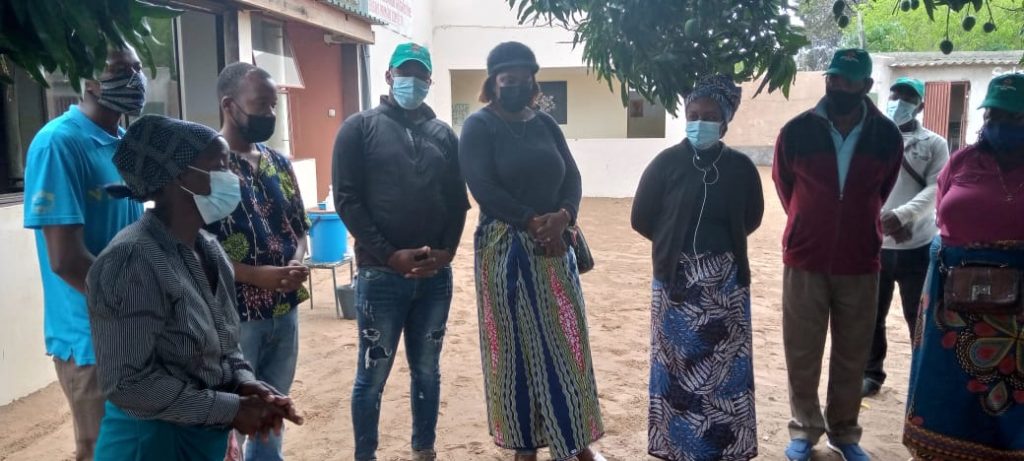
Despite Covid-19 restrictions, the spirit of the project was never in doubt. As previously discussed in our blog, the project team in Maputo successfully opened a photographic exhibition as one of the main avenues for dissemination and engagement. I am delighted to follow up with news that on World Fisheries Day (21 November) 2021, the postponed mobile community project exhibition opened in Katembe Community School with over 50 participants, including neighbourhood community leaders, members of the Fishing Community Council, and members of the Schools Board.
Project Co-investigator Valda Marcos, Head of the Department of Education and Exhibitions at The Ministry of the Sea, Inland Waters and Fisheries Museum of the Sea, used her wide experience to lead on exhibition content development and design. This comprised ten large scale and all-weather moveable graphic panels displayed on the exterior of the building.
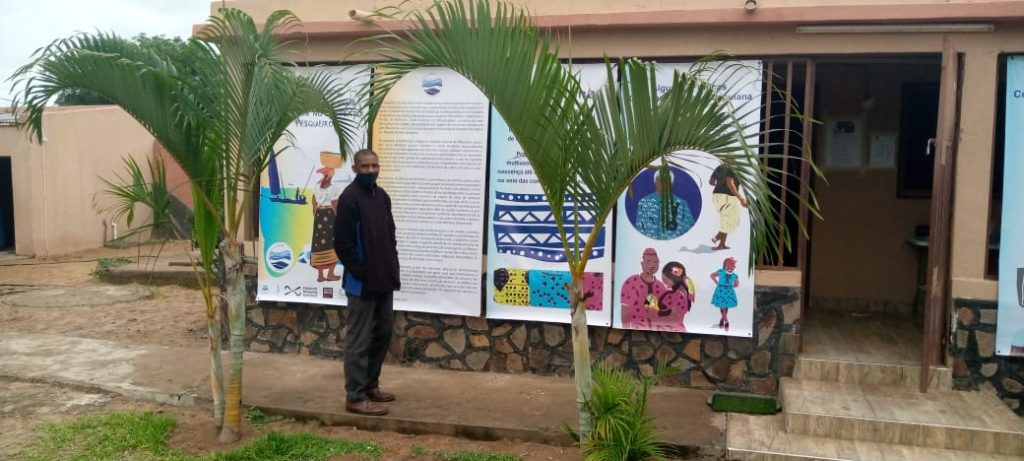
Their content is based on the project’s research, using cartoon imagery with bold captions to take the viewer on a journey and highlight the significance of the capulana as marine heritage within the community. The Fisheries Museum have significant experience delivering community exhibitions and the latest, ‘The secrets of the Capulana and its multipurpose in the fishing context’, is planned to travel to a number of coastal schools in 2022.
The core message is to raise awareness, especially amongst the young, of the importance of valuing the capulana as heritage. As Valda Marcos observed, ‘This appreciation does not only involve women’s recognition of the importance of the capulana, but also men, who have had contact with capulana since birth (on their mothers’ laps).’ One of the project interviewees encapsulated this beautifully, saying, ‘the capulana is part of us, she rocks us from birth and accompanies us until death’.
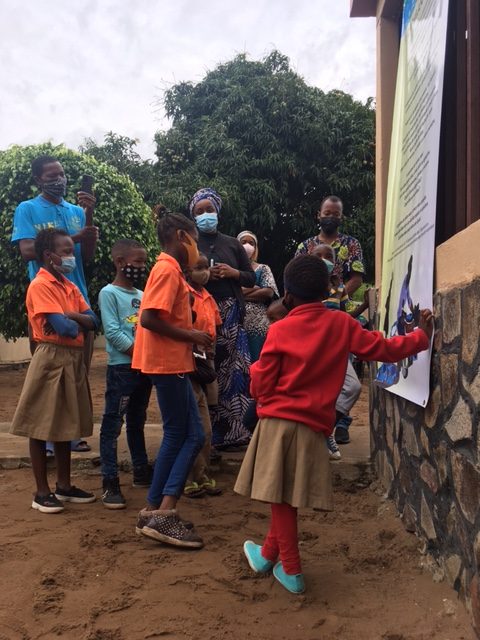
The Fisheries Museum have experimented with itinerant exhibitions before and witnessed their popularity with community members. The WITH Coastal Style mobile exhibition was no exception, and was well received by all age groups from the elderly to teenagers and children. Valda even received messages of thanks for the project initiative and requests for similar initiatives on a regular basis. For teachers, the exhibition is an incentive to share the story of the capulana in a coastal context with students who live by the sea.
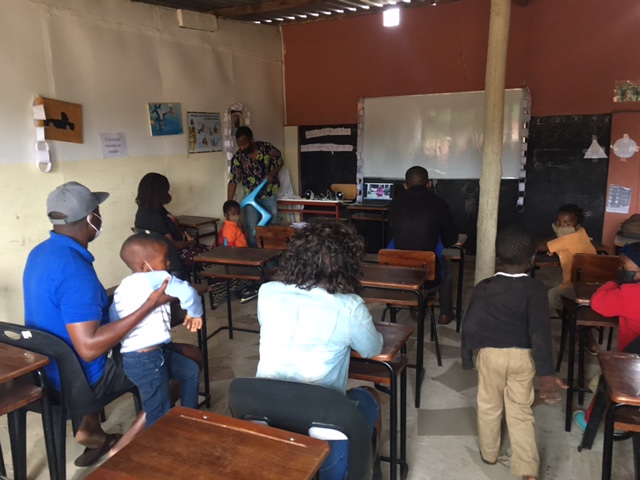
Although the capulana is so familiar, worn or used on a daily basis, an important element of the exhibition are the video recordings in which the older generation shared their memories of the capulana to the young generation in the classroom. Teachers used the initiative to encourage students to discuss the importance of the capulana in a variety of social contexts, during life events, and in political and religious contexts.
In addition, teachers used the exhibition and the messages it shared to encourage students to produce creative content related to capulana such as poetry, poems and stories. They also encouraged students to reuse and reinterpret the capulana in the production of various non-traditional objects including bracelets, earrings, necklaces, backpacks, bags, and notebook covers. Above all, students were encouraged to use the capulana as clothing in an expression of their heritage and Mozambican identity.
Reflections on a long and fruitful journey
All those involved in making WITH Coastal Style a reality will not forget the challenges we have experienced. We could not have expected that our one-year project, which began in June 2019, would be extended until the end of January 2022. Nevertheless, it has been a fruitful collaboration which has provided opportunities for learning, sharing and developing new ideas. Building relationships is a long-term process, and with this project we hope that the foundations have been laid for further international museum partnerships.

In Maputo, the success of the project lies in its engagement with the community. I am thankful to the participants who shared their stories about the capulana, to those across generations who came to listen, engage, and find inspiration in the capulana as a rich and dynamic expression of their cultural heritage.

WITH Coastal Style exhibition from the Fortress Museum, Maputo
Introduction
Proposed urbanization of the Katembe area will impact on the material practices and living traditions of the residents of the small fishing villages who live there. Life by and on the sea, catching, selling and eating fish, is a source of community solidarity that spans generations in Katembe. The photographs in this exhibition were taken among the women of Katembe during a recent project that aimed to generate understandings of the role of material culture in the local development and maintenance of cultural identity.
Clothing and dress are highly visual markers of individual and collective identity, and expressions of continuity and change. The focus of the project was the capulana, an iconic symbol of Mozambican heritage, worn, preserved and passed from one generation to the next, and the stories of the women who wear them. By directly researching women’s coastal heritage, this project aims to contribute towards the goal of promoting gender equality in the heritage sphere in Mozambique.
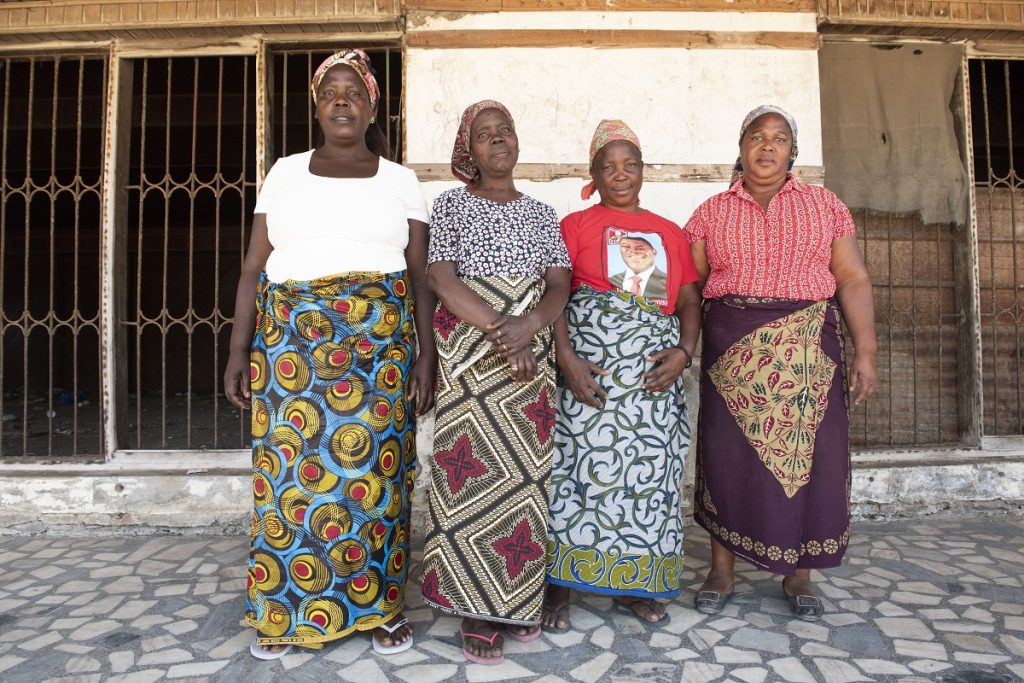
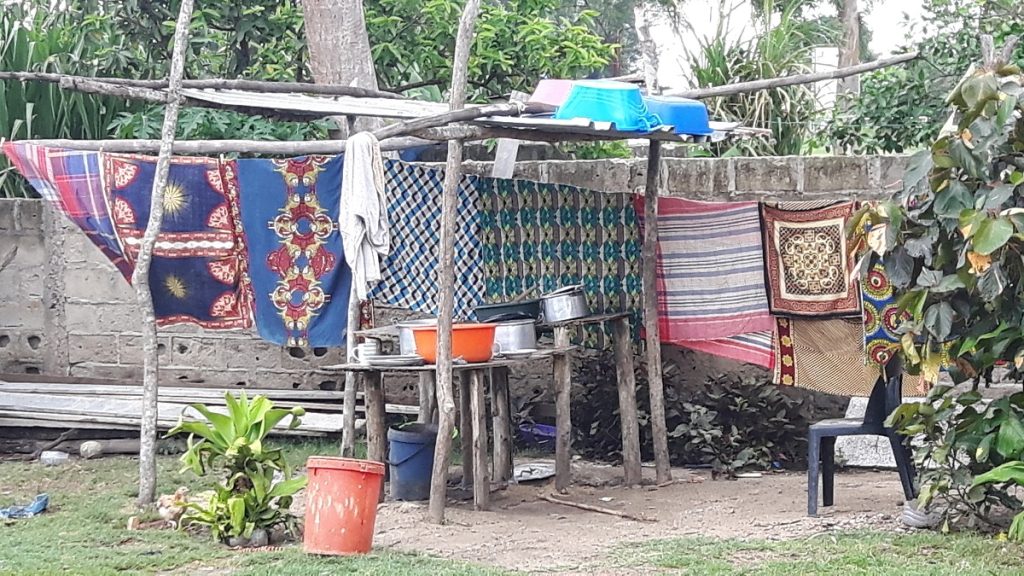
What is capulana?
“Every woman always has to wear a capulana … capulana can be useful in various situations … be it menstruation, pregnancy, carry a baby, go to the market, go to the hospital, in case of accident …”
– Dona Cristina, 54 years, Guachene, Katembe, November 2019
The capulana came to Mozambique in the mid-19th century through the Indian Ocean trade network from manufacturing centres in Gujarat, western India. Capulana are multi-coloured, patterned lengths of factory printed cotton cloths that are deeply embedded in the daily life of women in Mozambique. They are multi-functional and may be worn as wraparound skirts, fashioned into tailored outfits, used to carry babies, or as covers or shade from the sun.
Capulana are affordable and worn by all social classes. Often gifted for significant life events, capulana are markers of activities and social or familial relationships. It is common for women to have a collection of their favourite cloths stored away, which may be passed down generations or brought out and worn on special occasions. Capulana collections are a rich archive of women’s cultural heritage, recording specific events and people, and expressing individual and collective identity
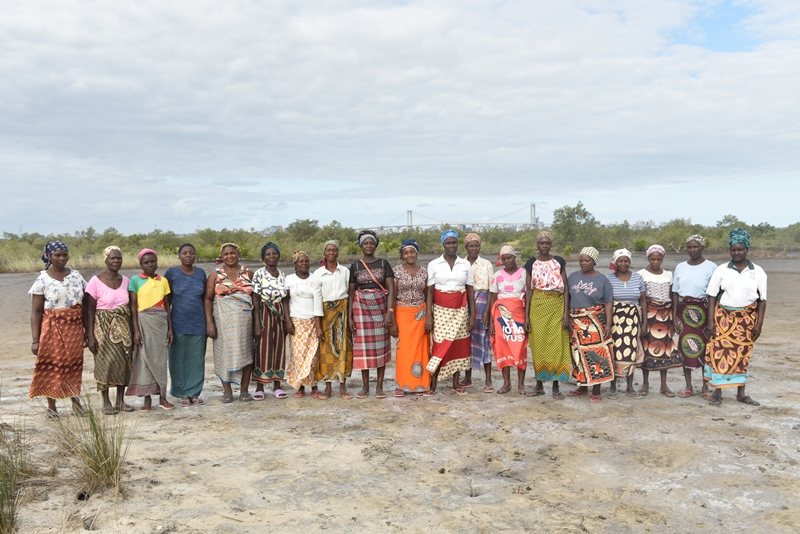
The coastal district of Katembe
“We are fisherwomen… then we bake the fish and sell it… we fish using nets… and the money we earn helps us with household expenses. We have been in this activity since our childhood … it was our mothers who taught us…”
– Dona Joana, 57 years, Incassane, Katembe, November 2019
Katembe is located on the south-western side of Maputo Bay, near the Estuário do Espírito Santo where the rivers Tembe, Umbeluzi, Matola and Infulene meet. The bay is 95 kilometres long and 30 kilometres wide. Small ferries were the only direct link to Maputo City until the opening of the longest road suspension bridge in Africa in November 2018, improving road connections between Maputo and South Africa and creating local access across the bay to Katembe.
The Masterplan for the Urbanization of the Municipal District of Katembe suggests the population will grow from 20,000 in 2018 to 400,000 by 2040, creating what planners describe as “a new Katembe, a city for the future”, including new touristic infrastructures. This has the potential to have a significant impact on the lives and traditions of the people who have lived there for generations. Through the capulana, as an example of women’s coastal heritage, this project aimed to foster broader conversations about what to keep and what to adapt as the community manages change.
Women of Katembe
“Every self-respecting woman has to have a capulana!”
– Dona Cristina, 54 years, Guachene, Katembe, November 2019
Twenty-seven women living in the District of Katembe, aged between nineteen and sixty-seven, participated in this project. Mothers, daughters, sisters, and friends, the women gave their time generously, invited the team into their homes, shared personal stories, and revealed the powerful role of the capulana as a material connection across generations.
The women base their working lives around the rhythm of the tides and the rains. They fish, process and sell the catch which includes shrimp and anchovies. They also grow crops of leafy greens, sweet potatoes and corn on their land. They support each other through informal local social gatherings, and more formal religious and political networks.
The intergenerational relationships of the close-knit communities of Katembe are important in the maintenance of social cohesion and the capulana is a significant communicator of shared codes of conduct. To wear the capulana both expresses and invites respect. Older women said it was important that they promote this tradition amongst the younger generation. Younger women confirmed that for them the capulana and its associations do continue to have significance as an expression of belonging, and as an important symbol of Mozambican female identity.
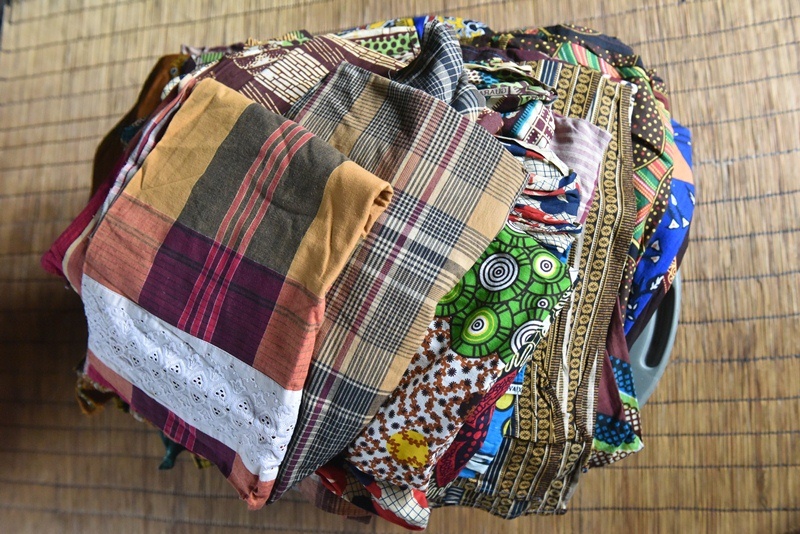
Heritage and Development
“I use capulana because I am a Mozambican woman!”
– Dona Zena, 22 years, Mahlampfane, Katembe, November 2019
Every society has a relationship with its past. People make conscious and unconscious decisions about what to remember and what to forget, what to keep and what to let fade away. In the face of mass urbanization and change, this project asked the women of Katembe how they valued the capulana as heritage. The women in the study group responded that the capulana functions as a material manifestation of their experiences, practices and beliefs, as lived in their coastal community.
The cloths feature in both domestic and public spheres of women’s lives, invested with memories of relationships, events or places, and these in turn create and maintain social bonds. To wear the capulana is to present multiple belongings, negotiating women’s identity between tradition and modernity. In Katembe today a capulana can recall for the owner the purchase of her first boat, the start of the fishing season, the inauguration of a new fish refrigeration plant, and even the day the Maputo-Katembe bridge was opened.
In this way, the wearing of the capulana is a bodily metaphor for the contemporary concerns of the women of Katembe, including the potential loss of collective memory, social cohesion, and belonging, as well as their resistance to, and negotiation of these risks by the maintenance and adaption of tradition.
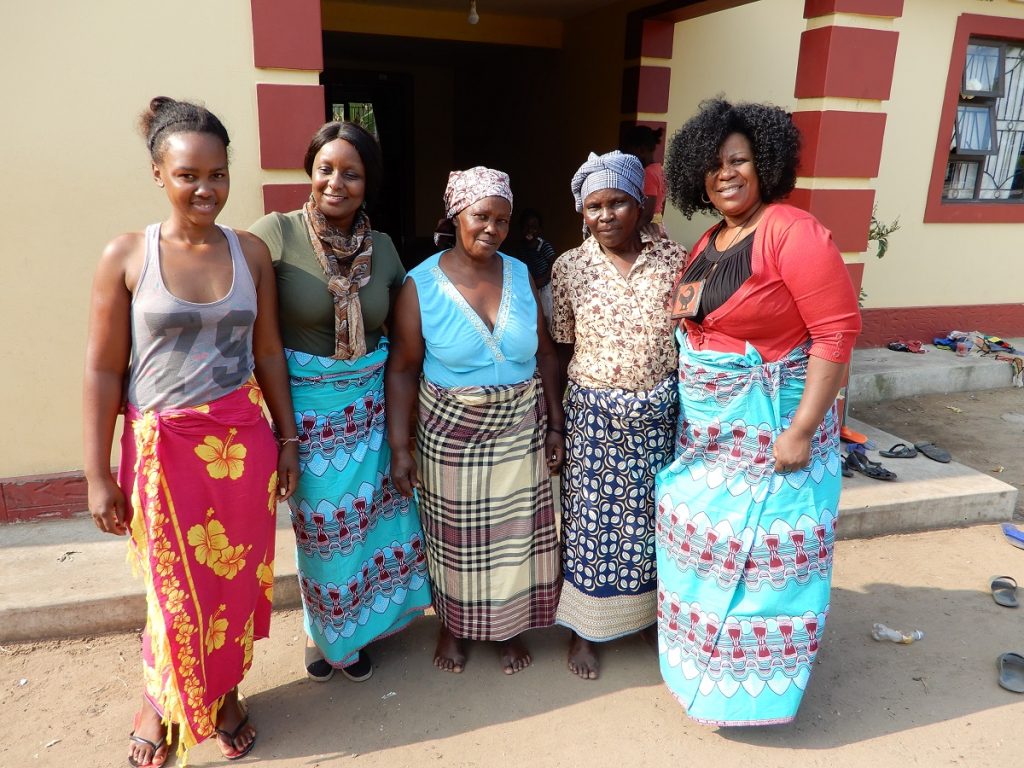
Acknowledgements
I am grateful to the following people for their involvement in and support of the WITH Coastal Style project:
Alice Augusto Tembe, Adelina Fabião Mondlane, Adélia Fabião Matsinhe, Amélia João, Ana José Mavuie, Ana M’Boisa, Amália Regina Bernardo Nhantumbo, Alice Salomão Chivindze, Catarina Chembene, Celina Licensane Afonso Mbie, Cristina Vicente N’Calane, Fátima Bovino Chico, Hortência David Mbie, Helena Nhaca, Isaura Verónica, Joana Almeida Mufume, Luúia Marrengula, Margarida Arone Timane, Maria Chihole, Miquelina Enoque Nhassengo, Rosalina Bovino Chico, Saugineta António, Verónica Rafael Sitoe, Zena Arlindo, Zenia Machanguane, Flora Raufa, Raufa Romão Tembe, Ivone Marcelino Machava, Maria Vicente, and Lili Mariano Sitoe.

